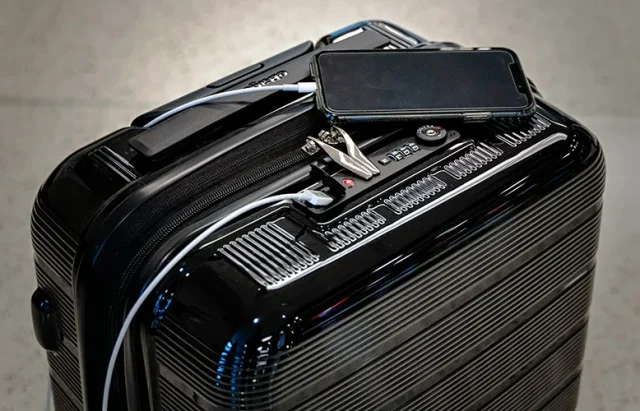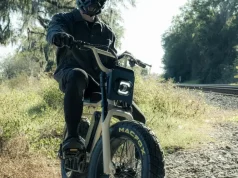
Packing for a long trip can often feel overwhelming, especially when you’re tempted to bring everything “just in case.” However, adopting a minimalist mindset can transform your travel experience. By focusing on what you truly need and embracing the principles of minimalism, you can pack light without sacrificing comfort or convenience.
Below, the Ecopia Retreat team gives us practical tips and strategies for embracing minimalism in your packing routine, helping you to travel lighter and smarter. Whether you’re planning a weekend getaway or an extended adventure, these insights will prepare you to pack efficiently and enjoy the journey ahead.
Embracing Minimalism
Understanding Needs vs. Wants
When it comes to packing for a long trip, one of the biggest challenges is distinguishing between what you need and what you want. Needs are items that are essential for your daily functioning and safety, such as clothing appropriate for the weather, necessary medications, and travel documents. Wants, on the other hand, are items that are nice to have but not crucial, like that extra pair of shoes or a novel you might read.
By focusing on your needs, you can significantly reduce the number of items in your luggage, making it easier to pack light. Ask yourself: Will I use this item regularly? Can I do without it? If the answer is “no,” then it’s likely something you can leave behind. This shift in mindset is crucial for embracing minimalist travel, where the goal is to carry only what is necessary, leaving room for spontaneity and ease in your journey.
Benefits of Minimalism in Travel
Minimalist travel isn’t just about having a lighter suitcase; it’s about the freedom that comes with it. When you pack light, you gain mobility—it’s easier to move through airports, navigate public transportation, and explore new places without being weighed down by heavy luggage. You’re also less likely to lose items, as you’ll have fewer things to keep track of.
Packing light also encourages a more authentic travel experience. With fewer belongings, you become more adaptable, allowing you to immerse yourself in the local culture and environment. Instead of being preoccupied with managing your stuff, you can focus on the experiences that truly matter—whether it’s trying new foods, meeting locals, or simply enjoying the scenery.
Practical Tips for a Minimalist Mindset
Adopting a minimalist mindset for travel requires some preparation, but it can be incredibly rewarding. Here are a few strategies to help you get started:
- Visualize Your Trip: Imagine your ideal trip where everything goes smoothly. What are the essential items that would help make this happen? Visualizing can help you identify what’s truly important and eliminate the rest.
- Set Limits: Decide on a specific number of items you’ll bring, such as three pairs of shoes or two pairs of pants. This forces you to prioritize and select only the most versatile pieces.
- Start Small: Begin by packing for short trips with just the essentials. As you gain confidence, apply these principles to longer journeys. This gradual approach helps ease the transition to a more minimalist packing style.
- Challenge Yourself: Before packing, lay out everything you plan to bring and challenge yourself to remove a third of it. This exercise helps you reconsider the necessity of each item and encourages you to be more selective.
The Ultimate Packing List
Clothing Essentials
Versatile Outfits
When packing light, choosing versatile clothing is key. Look for items that can be dressed up or down, mixed and matched, and worn in different settings. A good example is a neutral-colored dress or shirt that can be paired with different accessories to create various looks. Convertible clothing, like pants that can be rolled up into shorts, also maximizes your options without adding bulk.
Layering Basics
Layering is essential when traveling through different climates. Instead of packing multiple bulky items, opt for lightweight layers that can be added or removed as needed. A basic layering strategy might include a moisture-wicking base layer, a mid-layer like a sweater or fleece for warmth, and a lightweight, packable jacket that can protect against wind and rain.
The Rule of 3
The Rule of 3 is a simple yet effective guideline: pack three of each essential clothing item, such as tops, bottoms, and pairs of shoes. This allows you to rotate outfits, ensuring that you always have something clean to wear without overpacking. For example, you could pack three shirts, three pairs of socks, and three pairs of underwear—enough to last several days between washes.
Toiletries
Compact Toiletry Kit
Toiletries are often a source of overpacking, but a minimalist approach can save space. Stick to essentials only: a toothbrush, toothpaste, deodorant, and any medications you need. Opt for travel-sized versions or transfer products into smaller containers. Multipurpose items, like a 2-in-1 shampoo and conditioner or a moisturizer with SPF, can also help reduce the number of products you need to bring.
Local Purchases
Consider buying certain toiletries at your destination. Not only does this save space in your luggage, but it also gives you the opportunity to try local products. Items like shampoo, soap, and sunscreen are usually easy to find and can be purchased upon arrival.
Tech and Gadgets
Minimalist Electronics
When it comes to tech, less is more. Focus on the essentials: a smartphone, charger, and perhaps a power bank for extra battery life. A lightweight travel adapter that works in multiple countries can be invaluable. If you plan to take photos, consider whether your smartphone’s camera is sufficient or if a small, compact camera is necessary.
Digital Nomad Gear
If you’re working on the go, prioritize lightweight tech gear that won’t weigh you down. A slim laptop or tablet, along with a portable keyboard and a small external hard drive, can be all you need to stay productive while traveling. Look for gadgets that serve multiple purposes, such as a tablet that doubles as a laptop with a detachable keyboard.
Efficient Packing Methods
The Rolling Method
The rolling method is a tried-and-true technique for saving space in your suitcase. Instead of folding your clothes, roll them tightly into small cylinders. This method not only helps to maximize space but also reduces wrinkles in your clothing. Start with larger items like pants and shirts, rolling them as tightly as possible, and then move on to smaller items like t-shirts and undergarments. By rolling your clothes, you can fit more into your luggage and keep everything neatly organized.
Packing Cubes
Packing cubes are a game-changer for anyone looking to stay organized while traveling. These small, zippered compartments allow you to separate your clothing and other items into categories, making it easier to find what you need without unpacking everything. For example, you can use one cube for tops, another for bottoms, and a third for underwear and socks. Packing cubes also help compress your items, further saving space and keeping your suitcase tidy.
Vacuum-Sealed Bags
For bulky items like jackets or sweaters, vacuum-sealed bags are a great solution. These bags allow you to compress your clothing by removing the air, significantly reducing the amount of space they take up. Simply place your items in the bag, seal it, and use a vacuum or manual pump to remove the air. This technique is especially useful for winter travel, where you might need to pack heavier clothing without sacrificing too much luggage space.
Strategic Packing
Layering Heavy Items
When packing your suitcase, it’s important to distribute the weight evenly to make it easier to carry. Start by placing heavier items, such as shoes or toiletry bags, at the bottom of the suitcase. This not only keeps the weight balanced but also helps prevent lighter items from getting crushed. If you’re using a rolling suitcase, placing heavier items near the wheels will make it easier to maneuver.
Maximizing Carry-On Space
If you’re trying to avoid checked luggage, maximizing your carry-on space is crucial. Use every inch of your carry-on by packing small items, like socks or chargers, inside your shoes or the gaps between other items. Consider using a soft-sided bag that can expand slightly, allowing you to fit more inside while still adhering to airline size restrictions. Additionally, wearing your bulkiest clothing, such as a jacket or boots, during your flight can free up valuable space in your carry-on.
Keep Essentials Accessible
There’s nothing worse than having to dig through your suitcase at the airport or hotel to find something important. When packing, keep your essentials—such as your passport, travel documents, phone charger, and a change of clothes—in an easily accessible part of your luggage. If you’re using packing cubes, consider designating one cube for these items, or use a small, separate bag that you can quickly grab when needed. This not only saves time but also reduces stress, allowing you to focus on enjoying your trip.
Travel Light, Live Fully
Embracing a minimalist approach to packing allows you to travel with greater freedom, ease, and peace of mind. By focusing on essentials and adopting smart packing techniques, you can lighten your load—both physically and mentally. Remember, the less you bring, the more space you create for experiences, spontaneity, and meaningful connections on your journey. So, as you plan your next adventure, challenge yourself to pack light and enjoy the many benefits of minimalist travel. Safe travels!





